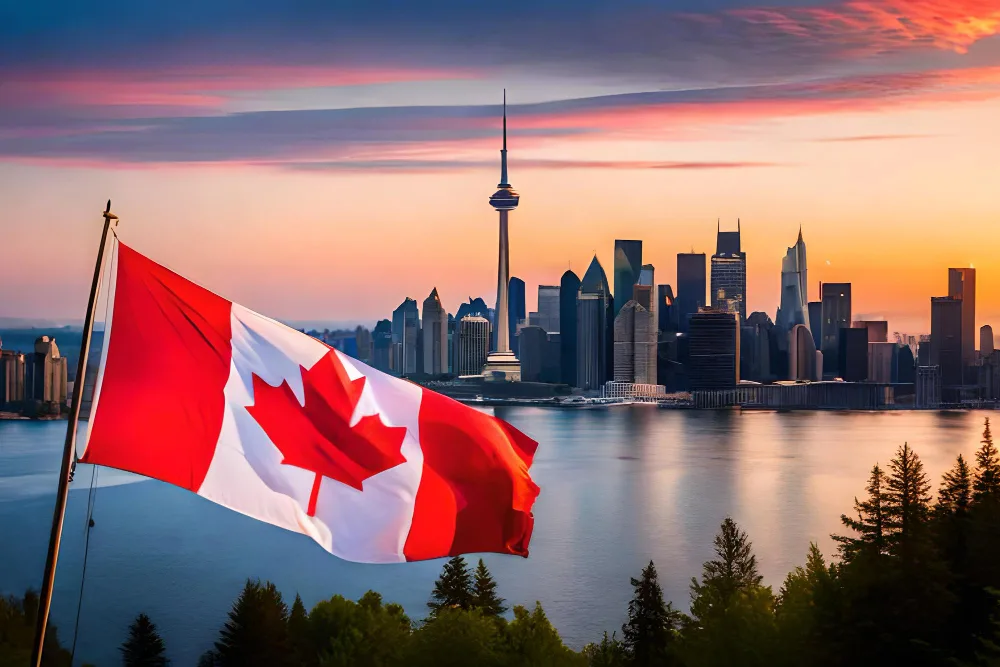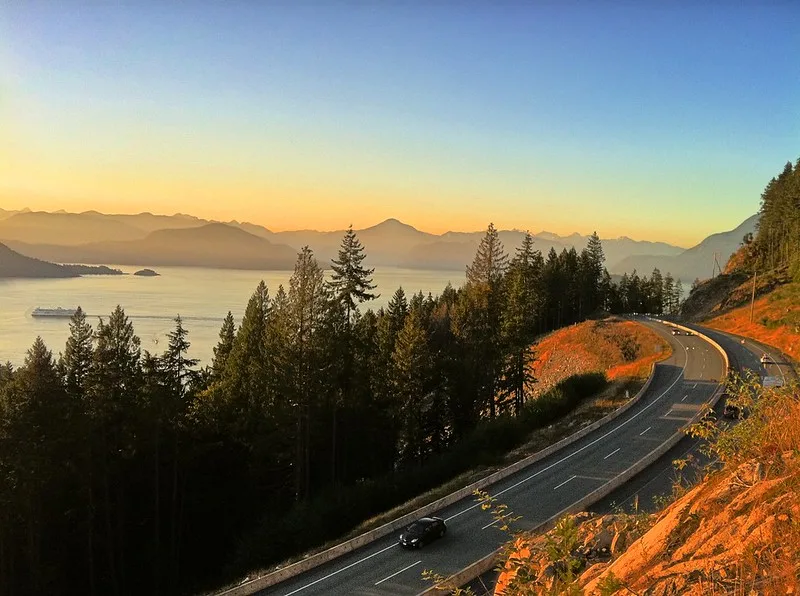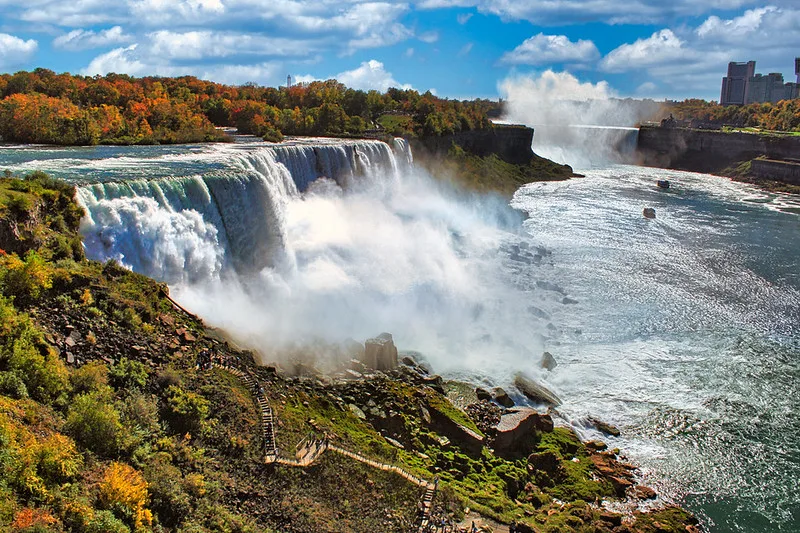Are you ready to embark on your first adventure in Canada? Picture yourself immersed in the stunning, diverse landscapes, from the snow-capped Rockies to the vibrant, bustling cities. Whether you crave the thrill of outdoor escapades or the charm of cultural experiences, Canada has something extraordinary waiting for you.
Uncover how to plan your trip around Canada’s distinct seasons, master the local transportation system, and fully embrace the rich cultural mosaic that defines this beautiful country. With insider advice and practical suggestions, you’ll be well-prepared to make the most of your visit.

Tips for Beginners in Canada
- Plan Your Trip According to the Seasons: Canada has four distinct seasons, each offering different experiences. Summer (June to August) is warm and great for outdoor activities like hiking, camping, and sightseeing. Winter (December to February) is cold, perfect for skiing, snowboarding, and enjoying winter festivals. Spring (March to May) and autumn (September to November) are mild and beautiful with blooming flowers and colorful leaves. Plan your activities based on the season to make the most of your visit.
- Understand the Local Transportation: Canada is a large country, and getting around can take time. Major cities like Toronto, Vancouver, and Montreal have good public transportation systems including buses, trains, and subways. For more remote areas or national parks, renting a car might be the best option. If you plan to travel between cities, consider using domestic flights or long-distance buses and trains. Familiarize yourself with the local transportation options to save time and money.
- Respect Local Cultures and Customs: Canada is known for its cultural diversity and friendliness. Be respectful of local customs and traditions. For example, tipping is customary in Canada, with 15-20% being standard in restaurants and for services like taxis and hairdressers. When visiting Indigenous communities, always ask for permission before taking photos and be respectful of their cultural practices.
- Stay Connected: Staying connected in Canada is easy with a local SIM card or international roaming plan. Major cities offer free Wi-Fi in many public places such as cafes, libraries, and shopping centers. Having a reliable internet connection will help you navigate, find local attractions, and stay in touch with family and friends.
- Try Local Cuisine: Canadian cuisine is diverse and delicious. Don’t miss out on trying local dishes such as poutine (fries topped with cheese curds and gravy), maple syrup products, and fresh seafood in coastal areas. Each region has its specialties, so be adventurous and explore the local food scene.
- Be Prepared for Wildlife Encounters: Canada is home to a variety of wildlife, including bears, moose, and deer. If you’re visiting national parks or rural areas, it’s important to know how to stay safe. Keep a safe distance from wild animals, never feed them, and store food properly when camping. Learn about wildlife safety tips to ensure a safe and enjoyable experience in nature.
- Learn Basic French Phrases: While English is the most widely spoken language in Canada, French is also an official language, especially in Quebec. Learning a few basic French phrases like “bonjour” (hello), “merci” (thank you), and “s’il vous plaît” (please) can be very helpful and appreciated by locals. Many Canadians are bilingual, but making an effort to speak their language shows respect and can enhance your travel experience.
Popular Routes in Canada for Tourists
Traversing the Trans-Canada Highway
The Trans-Canada Highway is a spectacular route stretching over 7,800 kilometers from the Pacific Ocean in British Columbia to the Atlantic Ocean in Newfoundland. This iconic highway allows travelers to experience Canada’s diverse landscapes and major cities.
You’ll pass through vibrant cities like Vancouver, Calgary, Winnipeg, Toronto, Montreal, and Halifax, each offering unique attractions such as bustling markets, historical sites, and rich cultural experiences. Nature lovers will enjoy the majestic Rocky Mountains, the vast prairies, and scenic coastal regions. Highlights include Banff and Jasper National Parks with their towering peaks and clear blue lakes. The Bay of Fundy in New Brunswick is another must-see, famous for the world’s highest tides. Whether you traverse the entire route or just a section, the Trans-Canada Highway promises an unforgettable journey.

Author : Kyle Pearce – flickr.com
Exploring the Icefields Parkway
The Icefields Parkway, spanning 230 kilometers, connects Jasper and Banff in Alberta through the heart of the Canadian Rockies. This route is renowned for its breathtaking mountain landscapes, pristine glaciers, and vibrant turquoise lakes.
Key attractions include the Athabasca Glacier, where you can take guided tours onto the ice, and Peyto Lake, known for its striking blue color. The parkway is also a great place to see wildlife, with frequent sightings of elk, bighorn sheep, and even bears. Numerous scenic viewpoints, picnic spots, and hiking trails dot the route, making it a paradise for nature enthusiasts. A drive along the Icefields Parkway is a must for anyone visiting the Canadian Rockies, offering awe-inspiring views at every turn.
Journey from Vancouver to Whistler
The Sea-to-Sky Highway, also known as Highway 99, is a scenic drive that stretches 120 kilometers from Vancouver to Whistler in British Columbia. This route is famous for its stunning coastal and mountain views.
Key stops include the Britannia Mine Museum, where you can delve into the area’s mining history, and Shannon Falls, one of the tallest waterfalls in British Columbia. The Sea to Sky Gondola is another highlight, offering panoramic views of Howe Sound and the surrounding mountains. Once in Whistler, you can explore this world-renowned resort town, known for its ski slopes, mountain biking trails, and vibrant village atmosphere. The Sea-to-Sky Highway is perfect for a day trip or a weekend getaway, offering a mix of adventure and relaxation.
Following the Cabot Trail
The Cabot Trail on Cape Breton Island in Nova Scotia is a 300-kilometer loop offering some of Canada’s most stunning coastal scenery. This trail winds through Cape Breton Highlands National Park, providing breathtaking views of rugged coastlines, lush forests, and the Gulf of St. Lawrence.
Popular activities along the Cabot Trail include hiking, whale watching, and exploring charming villages. Key stops include the Skyline Trail, with its spectacular mountain-top boardwalk, and the village of Baddeck, home to the Alexander Graham Bell Museum. The Cabot Trail is also known for its vibrant Celtic culture, featuring traditional music and dance. Spend a few days on this route to fully appreciate its natural beauty and cultural richness.
Quebec’s Route des Navigateurs
Quebec’s Route des Navigateurs, or the Navigators’ Route, is a scenic drive along the south shore of the St. Lawrence River from Baie-du-Febvre to Sainte-Luce. This route offers picturesque river views and charming villages rich in history and culture.
Along the way, you can visit historical sites, lighthouses, and museums. Highlights include the Musée Maritime du Québec in L’Islet, which showcases the region’s maritime history, and the historic village of Kamouraska, known for its beautiful architecture and local cuisine. The Route des Navigateurs is ideal for a leisurely drive, offering numerous opportunities to explore the local culture.
Cruising the Niagara Parkway
The Niagara Parkway is a scenic road that runs along the Niagara River from Niagara-on-the-Lake to Fort Erie in Ontario. This route offers beautiful views of the river, lush parks, and historical sites.
Key attractions along the Niagara Parkway include the stunning Niagara Falls, where you can take a boat tour to get up close to the falls, and the picturesque town of Niagara-on-the-Lake, known for its wineries and historic charm. Other highlights include the Butterfly Conservatory and the floral displays at the Niagara Parks Botanical Gardens. The Niagara Parkway is perfect for a leisurely drive, offering many scenic spots to stop and enjoy.

Author – Daniel Mennerich – flickr.com
Discovering the Viking Trail in Newfoundland
The Viking Trail in Newfoundland and Labrador takes you through some of Canada’s most historic and beautiful landscapes. This route runs from Deer Lake to L’Anse aux Meadows, where Norse explorers settled over 1,000 years ago.
Key attractions include Gros Morne National Park, a UNESCO World Heritage site known for its dramatic cliffs, fjords, and unique geological features. At L’Anse aux Meadows, you can explore the remains of an 11th-century Viking settlement and learn about the early Norse explorers who first came to North America. The Viking Trail also passes through charming coastal communities where you can experience local culture and hospitality. This route is perfect for history buffs and nature lovers alike.
Conclusion
Plan your trip around Canada’s distinct seasons to maximize your experience. Utilize local transportation options in major cities and consider renting a car for remote areas. Respect Canada’s diverse cultures and customs, including tipping and Indigenous practices. Stay connected with a local SIM card or international roaming plan for easy navigation and communication. Explore Canada’s varied cuisine, from poutine to fresh coastal seafood, and be adventurous with local specialties.
FAQs
What is the best season to visit Canada?
Canada offers unique experiences in all four seasons. Summer is great for outdoor activities, winter is perfect for skiing and snowboarding, while spring and autumn offer mild weather and beautiful landscapes.
How can I get around in major Canadian cities?
Major cities like Toronto, Vancouver, and Montreal have efficient public transportation systems including buses, trains, and subways. For remote areas, renting a car is recommended.
What cultural customs should I be aware of in Canada?
It’s important to respect local customs, including tipping 15-20% in restaurants and for services. When visiting Indigenous communities, always ask for permission before taking photos and respect their cultural practices.
How can I stay connected while traveling in Canada?
You can stay connected with a local SIM card or an international roaming plan. Major cities also offer free Wi-Fi in many public places like cafes, libraries, and shopping centers.
What local foods should I try in Canada?
Canadian cuisine is diverse and includes dishes like poutine, maple syrup products, and fresh seafood in coastal areas. Each region has its specialties, so be sure to explore and try local foods.